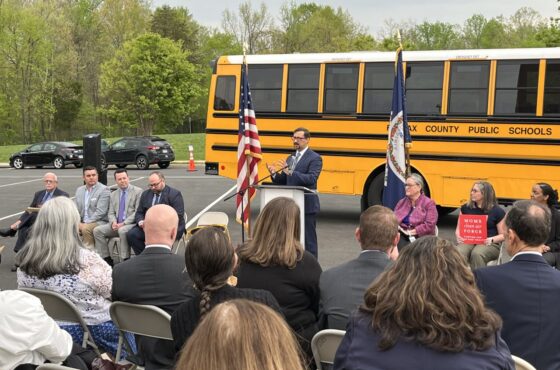Trump’s Infrastructure Plan Falls Far Short of What’s Urgently Needed
Published by the Natural Resources Defense Fund

Civil engineers give U.S. bridges, roads and other infrastructure a grade of D
Pixabay
President Trump’s long-delayed infrastructure plan is a set of thinly drawn concepts with no obvious source of direct funding.
It claims to help build a better future for all Americans but instead steamrolls public health and environmental protections. It includes initiatives and programs that would shift the burden of funding projects to states and cities, increasing the cost of living through new taxes, tolls, and user fees.
In other words, it’s far short of the what the American people want and need.
The president has made his personal embarrassment over the state of the nation’s infrastructure a key component of his many speeches and tweets about how much better other countries do on infrastructure than ours. It’s an area on which we can all agree: The current neglect is costing lives and livelihoods, literally, as in the case of the Minnesota bridge collapse, the degradation of the New York subway and the contaminated and untested drinking water in millions of Americans’ homes.
Investment in the very systems that help our modern society function is badly needed. The American Society of Civil Engineers estimates we need to invest $3.6 trillion on infrastructure by 2020 and continued underinvestment in will cost each American family $3,400 a year over the next decade.
Unfortunately, this plan doesn’t match the nation’s need. If the president thought his principles were going to pull people together to improve our public systems and spaces, he’s wrong. His plan isn’t about bipartisanship – as infrastructure should be – but about partisan and divisive politics.
The nuts and bolts
The White House says its plan will stimulate $1.5 trillion in new investment through an incentive package spurred by $100 billion in actual spending, with that money coming – not from new revenue sources – but from cuts from other parts of the federal budget. Relying on cash-strapped states and private companies to pay for these upgrades is both the wrong approach and a fantasy. If Trump wants to invest in infrastructure, he should show how the federal government will do. Instead, he wants the credit while foisting the costs on local taxpayers, toll-burdened drivers and transit riders.
The White House plan has no broad vision, no focus on, say, public transportation upgrades nationally, expanding broadband to rural areas, eliminating lead in drinking water or making communities more resilient to devastating storms and flooding. Transit funding and the Transportation Department’s TIGER grants, which target funds designed on overdue fixes, actually suffer cuts under this plan.
The plan also includes a fraudulently based promise to curtail environmental reviews. The administration keeps repeating the falsehood that it takes 10 years to get approval to build a road. It doesn’t, but Trump’s corporate allies want to short-circuit the ability of local residents to have a say in projects that will affect their communities for decades to come.
Infrastructure at center stage
With this plan, the White House is blowing a major opportunity in a year when infrastructure has become an important topic of national concern. That happens when Americans see their cities and towns struggling with failing bridges, strained rail lines, roads, and transit hubs, flooded and polluted waterways, and lead-tainted drinking water. Last year’s hurricanes showed improvements needed in coastal communities to get more resilient in the face of a changing climate.
We offer a different way with principles that emphasize an approach that works to fix the substantial amount of infrastructure that’s broken, prevent the mistakes of infrastructure planning from decades ago, correct inequities and provide for long-term needs of communities.
Direct federal investment to states, cities and communities that have a say in how it’s committed is needed to keep the promise of more and better jobs, and other economic, social and environmental benefits. We favor flexibility in accomplishing projects but at the same time, we can’t shortcut environmental standards to get things done — and the public agrees.
For the “public”
Public infrastructure makes daily life in our complex world navigable and gets us where we want to go as safely as possible. It’s a public good and should be equally accessible to all. The operative word here is “public.” Public dollars spent on public infrastructure must be used for the public good. Sadly, Trump’s plan doesn’t do that.
Remember, the roads and water pipes built today will remain with us for decades to come, just as the decisions of the past have left us with highways through neighborhoods and city centers, lead-lined pipes, inadequate public transportation, and repeated flooding and sewer overflows into our rivers and streams.
The White House says its proposals are the start of a negotiation with Congress to find the best solution for infrastructure in the U.S. We can only hope that’s the case and that lawmakers will insist on a viable, sustainable and equitable infrastructure plan for America.
Read the full article at: https://www.nrdc.org/experts/shelley-poticha/trumps-infrastructure-plan-falls-far-short-whats-urgently-needed





